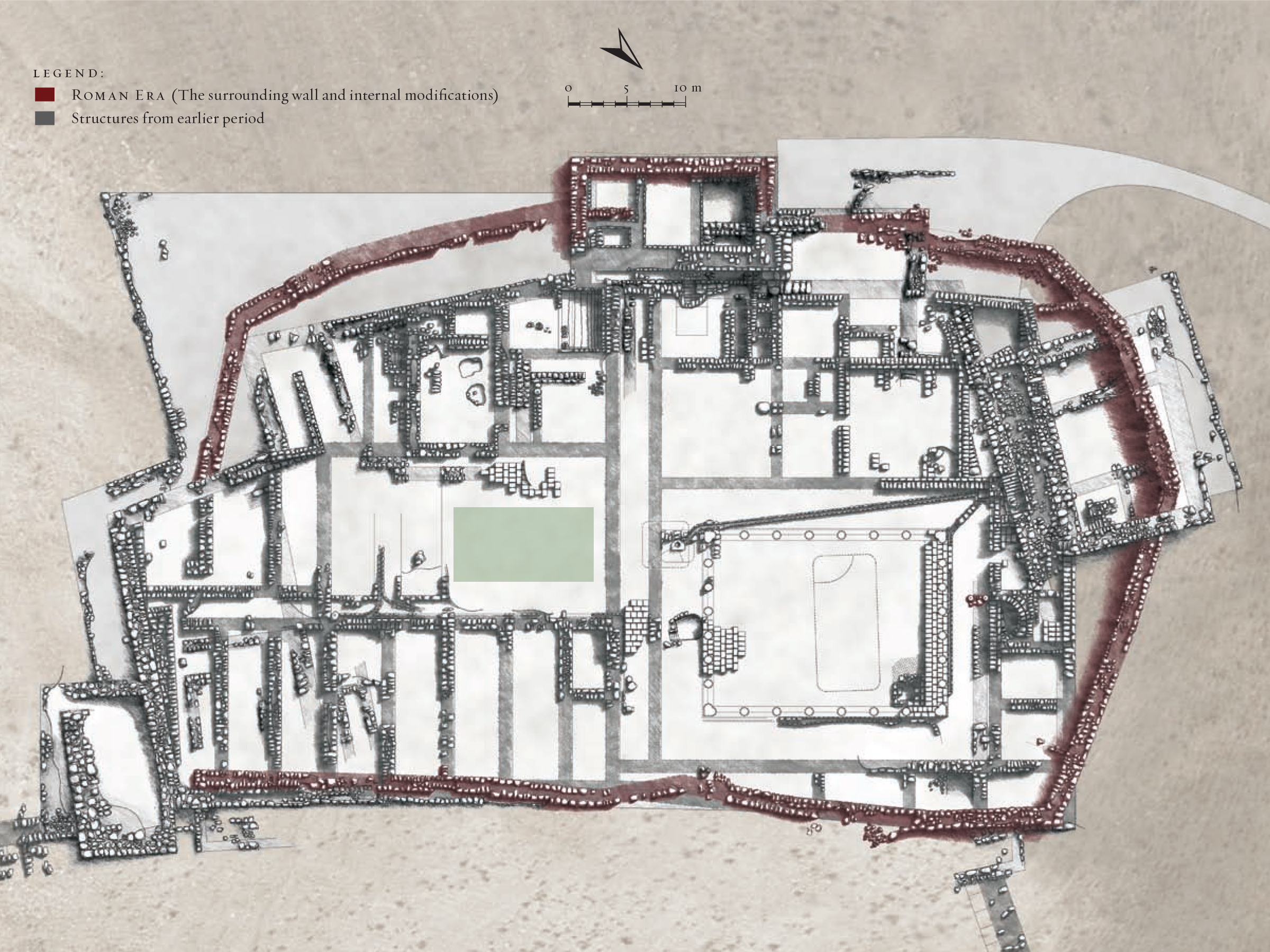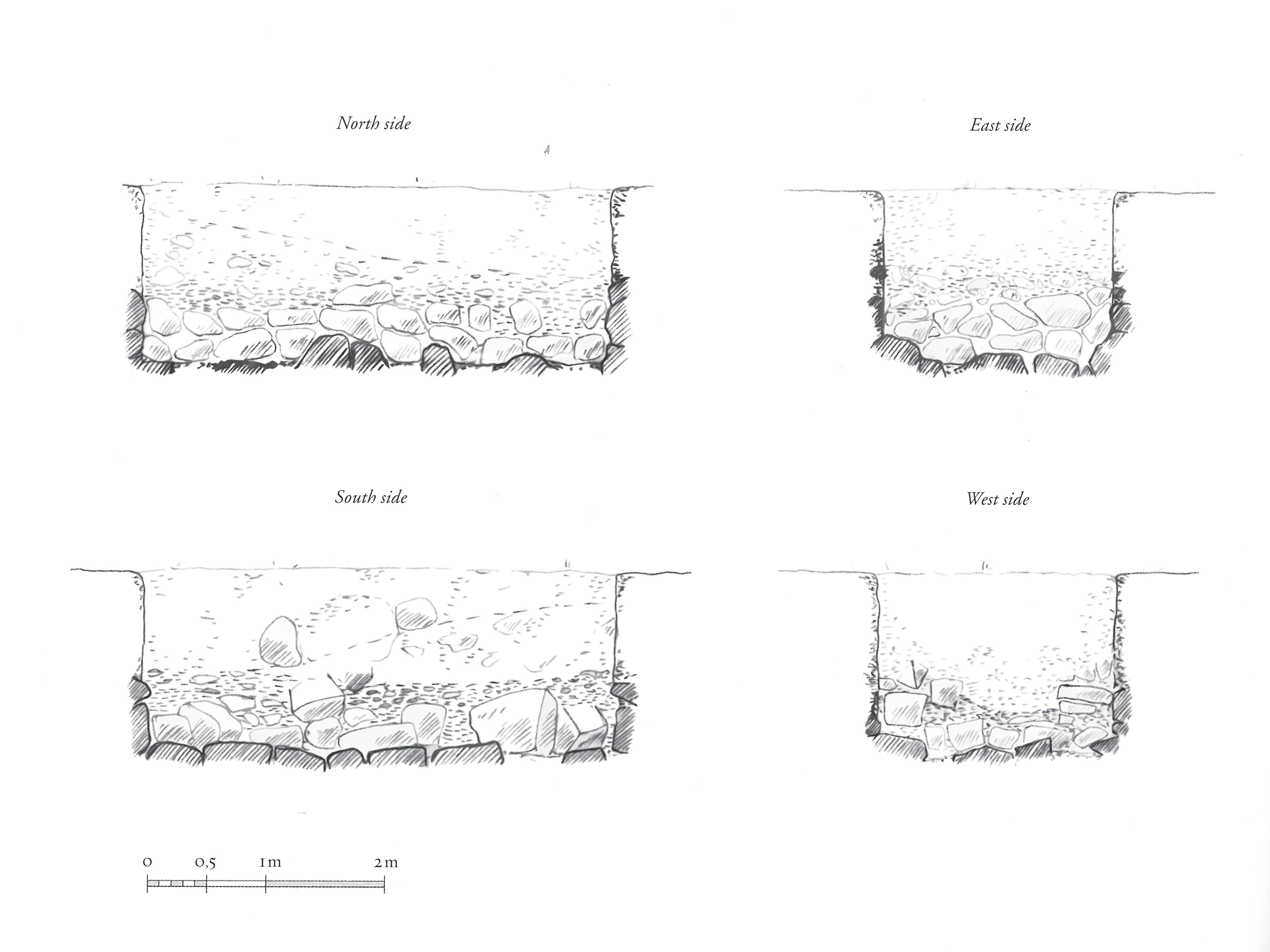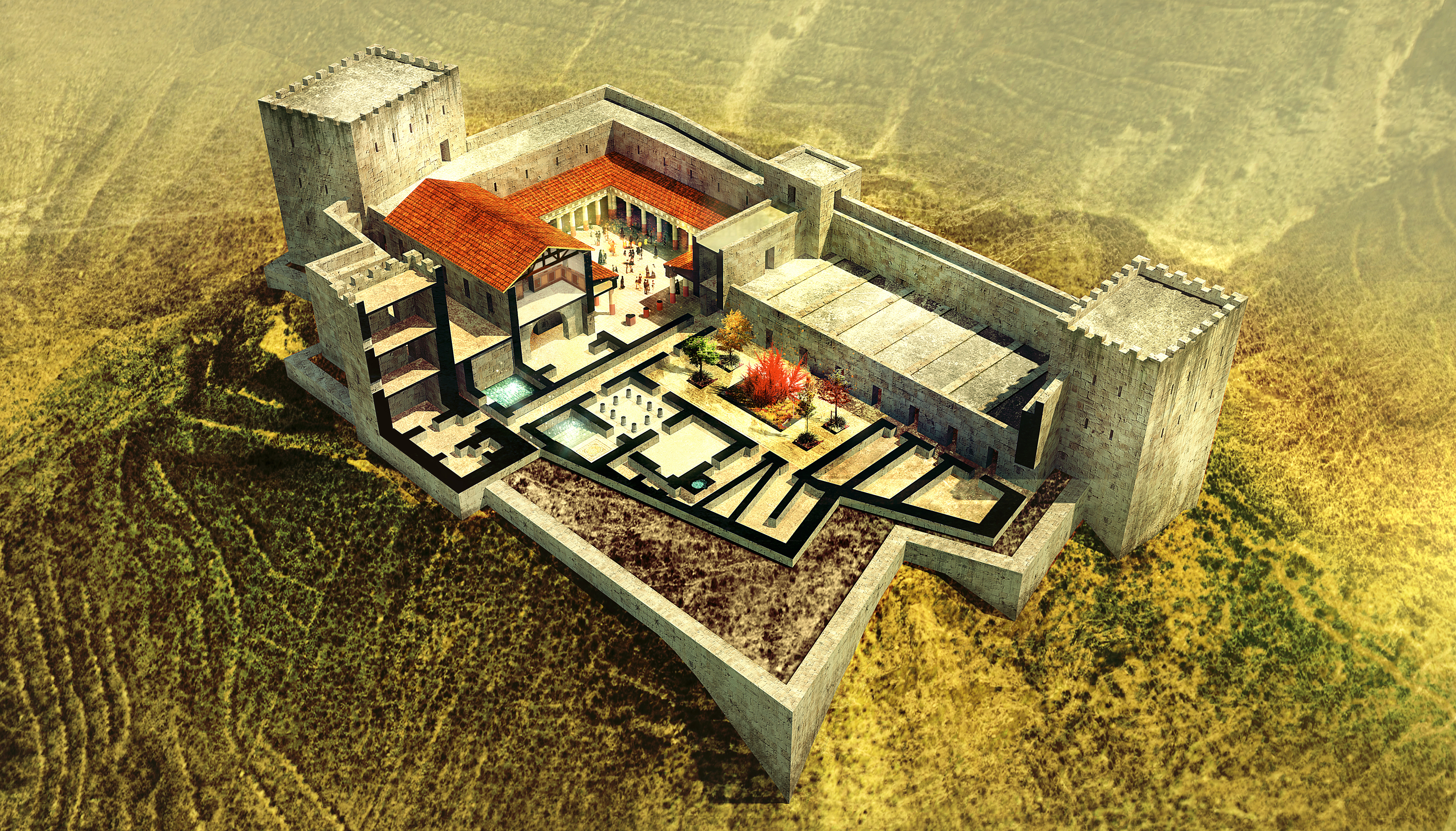Machaerus Southern Courtyard
Province
Judaea
Iudaea (province) (Pleiades)
Province Description
Judaea, the Roman province, included parts of the areas of the Hasmonean and Herodian kingdoms, notably Biblical Judah, Samaria, and Edom. Its capital was Caesarea Maritima. Roman influence in the region began in 63 CE, when the Roman general Pompey the Great conquered Syria from Mithridates of Pontus, besieged Jerusalem, and captured the Second Temple; he appointed Hyrcanus, one of the two Hasmonean brothers fighting for kingship, as ethnarch of Judaea. Later, Julius Caesar appointed Antipater, the father of Herod, as Judaea's first Roman Procurator. Later these ties allowed Herod to seek backing from Rome against the Hasmoneans in 40 BCE, when the Senate recognized him as “king of the Jews.” His territories came to include the regions of Galilee, Gaulanitis (the Golan),Peraea and the Decapolis, and Augustus later granted him the coastal cities, Batanaea, Auranitis, and Trachonitis. Herod balanced his allegiance to Rome with the independence of his kingdom, often employing architectural projects to express his ambitions and control of nature to express his capacity to rule . His many palaces, placed strategically around the kingdom, feature dramatically designed landscapes and gardens. Upon his death, his son and heir Archelaus was unable to maintain order and the major part of Judaea was annexed to Syria in 6 CE, with its own prefect, while two other sons of Herod, Philip and Antipas, received territories as tetrarchs. By the time of Trajan, Judea was reduced in size and many of the Herodian palaces abandoned, preserving them over the millennia for archaeologists. Hadrian renamed the province After the Bar Kochba revolts (132-135)Hadrian renamed the province Syria Palaestina, erasing the name of Judaea.
The geography of Judaea comprises a wide variety of biomes, from richly watered plains of the Galilee and the Jordan, to the semi-arid Judean Hills, the humid, fertile coastal plain of the Mediterranean, and the deserts of the Dead Sea valley and the Negev. The period for which we have the richest evidence of a garden culture in this region is during the reign of Herod the Great. An allied king of Rome, Herod’s relationships with Mark Antony, Cleopatra, Augustus, and Marcus Agrippa and other officials ave been preserved in the texts of Flavius Josephus. These constitute a rare record of interactions between Rome and its territories, and provide a valuable context for understanding the trends of design in the early imperial period. The proximity of Judaea to Alexandria, whose palaces and gardens lie beneath the modern city and its harbors, may also provide a suggestion of the late Hellenistic garden culture that Romans emulated. Evidence of gardens in the Hasmonean winter palaces at Jericho and the palace identified as that of Hyracanus the Tobiad at 'Iraq al-Amir on the other side of the Jordan Valley provide rare cases where texts can illuminate archaeological evidence. These gardens require further investigation and both are threatened by local development.
Location
Macchaerus
Macchaerus (Pleiades)
Location Description
Josephus describes the citadel of Machaerus in detail (JB VII, 6) as the location where John the Baptist was imprisoned and executed by Herod Antipas. The German explorer, Ulrich Jasper Seetzen located it for publication in 1807. The site lies east of the Dead Sea in Transjordan. Excavations were conducted by Vardaman in June 1968, by Corbo and Piccirillo in 1978-1981 and 1992-1993. In 2008, the Hungarian Academy of Arts resumed work.
Garden
Royal Garden
Keywords
Garden Description
During the architectural survey in 2010, the team excavated a 4 x 2m trench to the west of the storerooms and east of the bath quarter. Working to a depth of 2m, the archaeologists encountered one meter of homogenous soil over the artificial stone terrace. The only artifact found was a Herodian lamp. The soil was sealed off from the terrace by a layer of hydraulic mortar. After thorough examination of the stratigraphic section we were able to establish that the southern courtyard of the Herodian places was filled with soil, creating a place for a royal garden. It is the only possible location for a garden within the walls of the citadel, and thus corresponds with description by Josephus. "Now within this place [inside Machaerus] there grew a sort of rue [Ruta] that deserves our wonder on account of its largeness, for it was no way inferior to any fig tree whatsoever, either in height or in thickness; and the report is, that it had lasted ever since the times of Herod, and would probably have lasted much longer, had it not been cut down by those Jews who took possession of the place afterward." (Josephus, War VII 6, 3) Water was supplied to the garden from cisterns built in the Herodian and Hasmonean times (Vörös 2012, 534-535). Like other gardens of Herod, it lay near a bath complex and may have used the water draining from the bath.
Plans

Figure 1: Plan of the Herodian places at Macchaerus, the excavated garden is marked with a green rectangle (Vörös, 2013).
Images

Figure 2:Section drawing of the research trench in the Southern Courtyard (Vörös, 2013).

Figure 3:Cutaway bird’s eye view of the Herodian fortified royal palace from the south. This theoretical reconstruction is superimposed on an aerial photograph by David Kennedy.
Bibliography
Vörös, G, “Machaerus: Excavations and Surveys (2009-2013)” SHAJ XII, 529-542. http://publication.doa.gov.jo/uploads/publications/15/SHAJ%20XII-529-542.pdf (see model on p. 539 fig. 11); Vörös, Gy. 2013. MACHAERUS I: History, Archaeology and Architecture of the Fortified Herodian Royal Palace and City Overlooking the Dead Sea in Transjordan. Final Report of the Excavations and Surveys: 1807-2012. Milano: Edizioni Terra Santa, SBF Collectio Maior 53.
Vörös, G, 2013: MACHAERUS I: History, Archaeology and Architecture of the Fortified Herodian Royal Palace and City Overlooking the Dead Sea in Transjordan. Final Report of the Excavations and Surveys 1807–2012 (SBF Collectio Maior 53), Milan. Worldcat
Vörös, G, 2015: MACHAERUS II: The Hungarian Archaeological Mission in the Light of the American-Baptist and Italian-Franciscan Excavations and Surveys. Final Report 1968–2015 (SBF Collectio Maior 55), Milan.Worldcat
Vörös, G, 2019: MACHAERUS III: The Golden Jubilee of the Archaeological Excavations. Final Report on the Herodian Citadel 1968–2018 (SBF Collectio Maior 56), Jerusalem–Milano–Mount Nebo.Worldcat
Vörös, G, 2020: “The Bema in the Lithostrotos-Gabbatha on the Golgotha of Saint John the Baptist: The Apsidal Judgement-Seat Throne-Niche of Tetrarch Antipas in the Stone-Paved Herodian Royal Peristyle Courtyard of the Fortified Machaerus Mountaintop-Palace Overlooking the Dead Sea in Transjordan,” Holy Land Archaeology on Either Side: Archaeological Essays in Honour of Eugenio Alliata, ofm. (SBF Collectio Maior 57), Milano, pp. 99–120.
Pleiades ID
Contributor
Publication date
21 Apr 2021